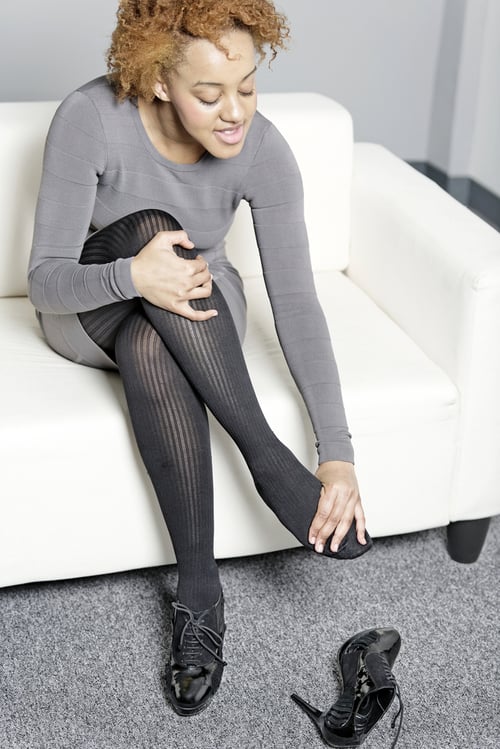
What is a Bunion?
A bunion is a knot that forms on the outer side of your big toe joint when the bone or tissue of the big toe joint moves out of place, making your big toe turn in and push against the next toe. Bunions are often red, swollen and/or painful, and they can also become so large that it is difficult to find shoes that are comfortable to wear.
What Causes Bunions to Form?
There are several things believed to be underlying causes of bunions. Unfortunately, first and foremost is genetics. If you have bunions in your family, your chances of getting one are higher. This is partially because of inherited foot types; if you have low arches, flat feet, arthritis or any other bone/joint diseases, then your foot is more prone to forming a bunion.
Another thing associated with bunion formation is ill-fitting shoes; shoes that are too tight or too narrow — like pointed-toe high heels — can encourage bunion growth.
Bunions have also been associated with foot injuries and birth deformities.
How Can I Tell if It’s a Bunion?
The big toe is responsible for bearing most of the weight of your body while walking, so most of the symptoms linked to bunions are related to this constant pressure on the affected area.
Symptoms of bunions can include:
- A bulge or bump located on the outside of your big toe
- Swelling around the joint in your big toe
- Redness and soreness in the area
- Chronic or intermittent pain in your toes and foot
- Limited movement of your big toe
What Can I Do to Help a Bunion?
If you think you have a bunion, it's important to wear comfortable shoes; this means no high heels and no shoes with narrow, tight-fitting toe-boxes. There are also products you can buy to help correct and/or alleviate pain, like this complete bunion pain-relief kit that includes several options all in one.
Why Should You Monitor a Bunion Closely?
While bunions often cause no complications other than pain and discomfort, untreated bunions can lead to more problematic complications:
- Bursitis — Bursitis occurs when the pads that protect and cushion your feet and tendons become inflamed, causing severe pain
- Metatarsalgia — Bunions can lead to painful inflammation in the ball of your foot called metatarsalgia
- Hammertoe — This can occur when shifting bones cause an abnormal bend in the middle joint of one or more toes, leading to pain and pressure
Can You Get Rid of Bunions?
The good news is there are ways to treat bunions or alleviate the symptoms caused by them. The least invasive way to treat your bunion is to wear comfortable shoes that have additional padding or inserts to cushion the area. For flare-ups, you can try splinting, applying ice and using over-the-counter pain relievers.
If your bunion pain is severe, you may need to see a podiatrist to decide your best course of action. Treatments such as cortisone injections, anti-inflammatory medications, physical therapy, custom shoe inserts or surgery are all options your podiatrist might recommend.
If your bunions begin to cause complications or hinder your daily living, don't hesitate to talk to your doctor to find out which treatment options will work best for you.
D. Sean Sweeney, D.P.M., and Christy Leahey, D.P.M., are foot and ankle specialists who offer leading-edge medical and surgical management of the foot and ankle. Contact one of their two state-of-the-art offices in The Woodlands, TX (in The Woodlands Crossing Shopping Center) or Magnolia, TX (near the intersection of FM 1488 and FM 2978) for a consultation today.







